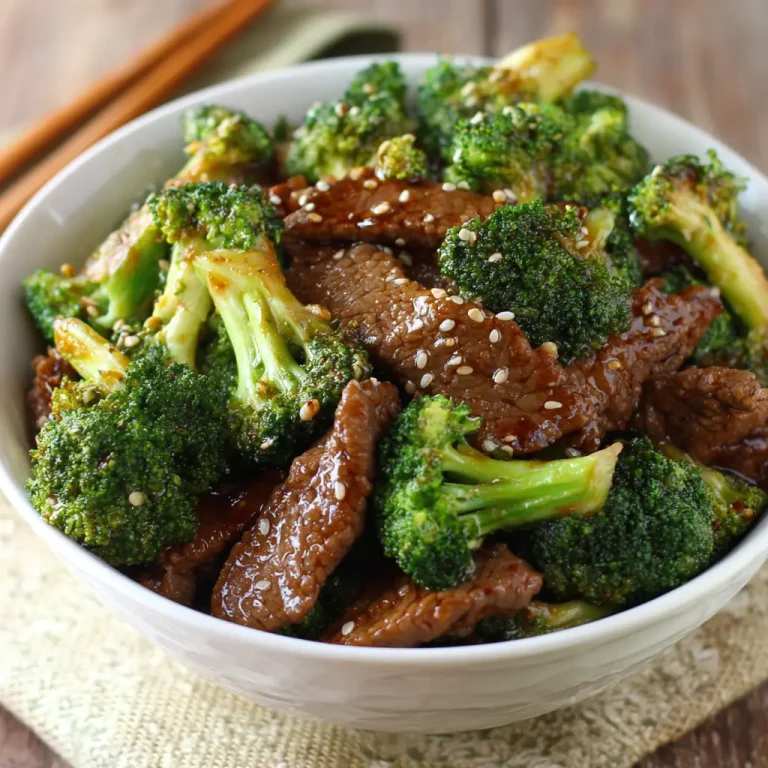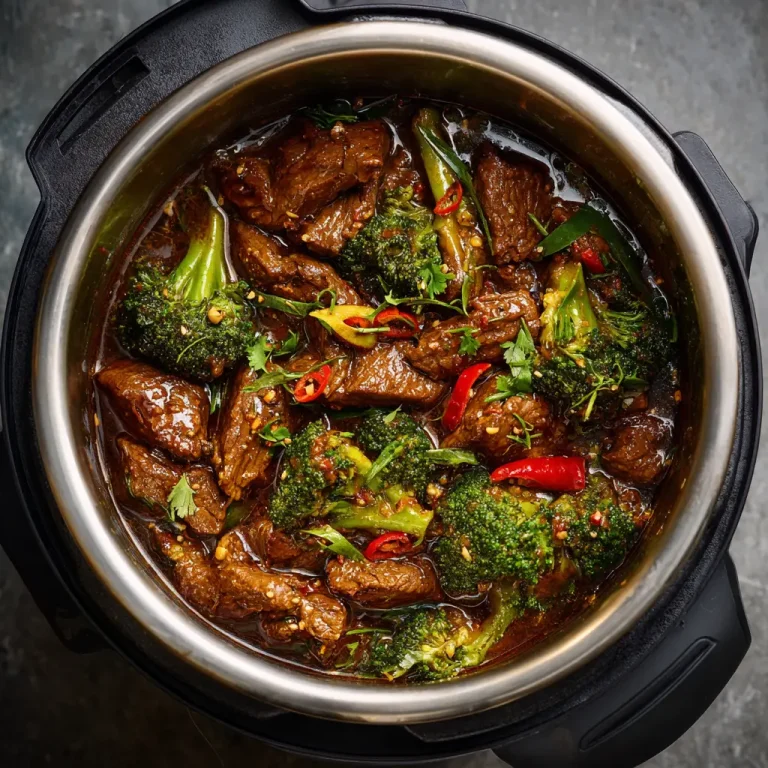Mongolian Beef Recipe Easy Homemade Cooking Guide
Introduction
Mongolian beef is a classic dish that combines tender slices of beef with a rich, savory sauce that perfectly balances sweet and salty flavors. Loved in Chinese-American cuisine, it has gained popularity around the world for its comforting yet sophisticated taste. The magic of Mongolian beef lies not only in the ingredients but also in the technique. Searing the beef quickly over high heat locks in flavor while keeping the meat tender. The sauce, made from a combination of soy sauce, brown sugar, garlic, and ginger, infuses every bite with a deep, robust taste. Cooking this dish at home brings the satisfaction of enjoying restaurant-quality food while customizing it to suit personal taste. A homemade version allows control over ingredients, ensuring freshness and the ability to adjust sweetness, saltiness, or spice levels. Whether served over steaming rice or alongside stir-fried vegetables, Mongolian beef delivers a flavorful experience that pleases both the eyes and the palate. Creating this dish in your own kitchen can become a weekend ritual or a quick weekday favorite, giving the family a warm, flavorful meal without the need for takeout.
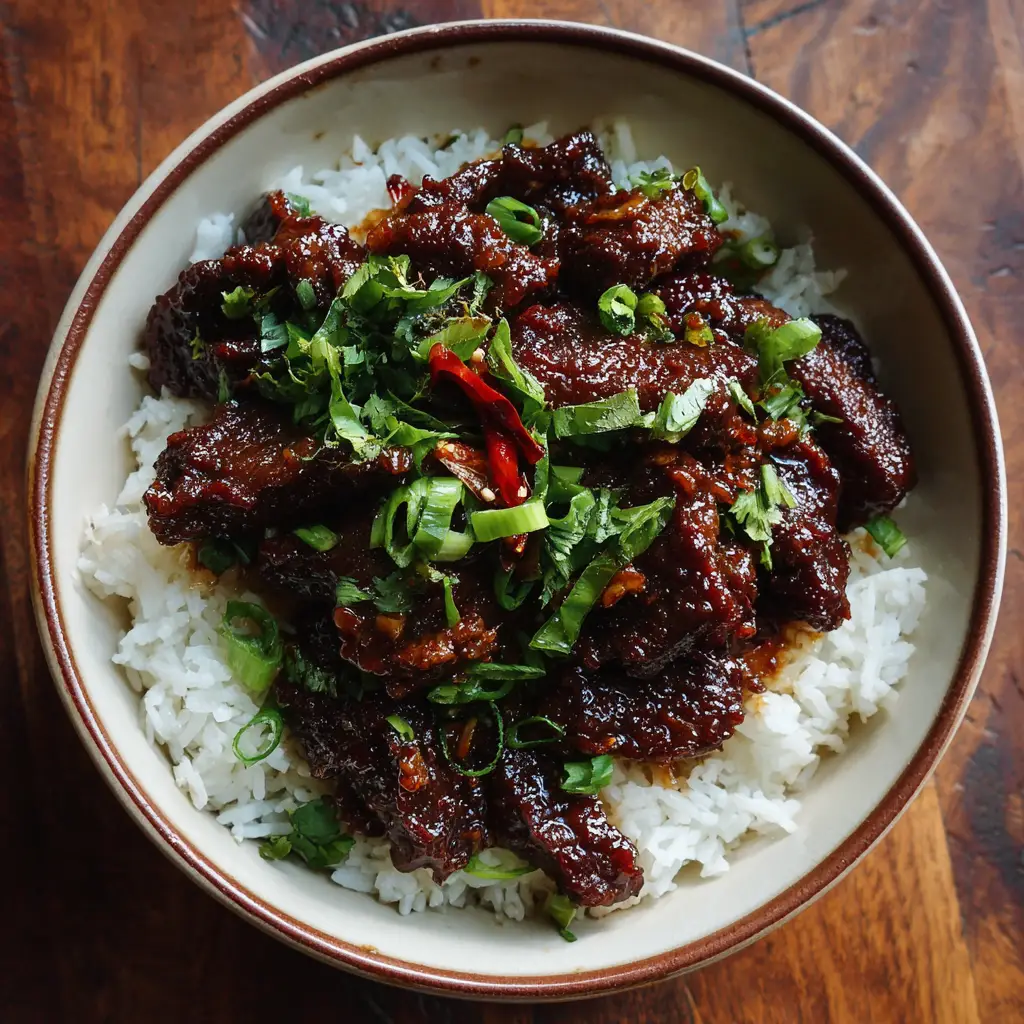
Ingredients Needed
Creating Mongolian beef requires fresh, simple ingredients that combine to make a spectacular dish. Below is a table listing the primary ingredients along with their approximate calorie count per serving size.
| Ingredient | Quantity | Calories |
|---|---|---|
| Beef sirloin, thinly sliced | 1 pound | 680 |
| Soy sauce | 1/2 cup | 65 |
| Brown sugar | 1/2 cup | 420 |
| Garlic, minced | 3 cloves | 15 |
| Ginger, minced | 1 tablespoon | 5 |
| Cornstarch | 1/4 cup | 120 |
| Vegetable oil | 2 tablespoons | 240 |
| Green onions, sliced | 3 stalks | 15 |
| Water | 1/2 cup | 0 |
| Optional chili flakes | 1/2 teaspoon | 0 |
These ingredients are easy to find in most grocery stores. The beef sirloin should be sliced thinly to ensure fast cooking and tenderness. The balance between soy sauce and brown sugar creates the signature Mongolian flavor that is slightly sweet yet savory. Garlic and ginger provide a fragrant aroma that elevates the dish. Cornstarch helps thicken the sauce and gives the beef a beautiful glaze, while green onions add freshness and color. A splash of water helps the sauce coat the meat evenly. Adding chili flakes is optional but gives the dish a subtle kick if desired.
Step by Step Cooking Instructions
- Prepare the Beef
Begin by slicing the beef sirloin into thin, uniform strips. This ensures even cooking and helps the meat absorb the sauce. Toss the beef in cornstarch until each piece is lightly coated. This coating creates a silky texture when cooked and helps the sauce cling to the meat. - Make the Sauce
In a small bowl, combine soy sauce, brown sugar, minced garlic, minced ginger, and water. Stir until the sugar dissolves completely. The mixture should be balanced, with a good combination of sweet and salty flavors. Set the sauce aside while preparing the beef. - Cook the Beef
Heat vegetable oil in a large skillet or wok over medium-high heat. Once the oil is hot, add the beef in small batches to avoid overcrowding. Sear each side for about two to three minutes until the meat is browned but still tender. Remove the cooked beef from the skillet and set aside on a plate lined with paper towels. - Prepare the Sauce in Skillet
In the same skillet, pour in the prepared sauce. Allow it to simmer for two to three minutes, stirring constantly to prevent burning. The sauce will begin to thicken slightly, becoming glossy and fragrant. Taste the sauce and adjust if necessary, adding more soy sauce for saltiness or sugar for sweetness. - Combine Beef and Sauce
Return the beef to the skillet and toss it in the sauce until each piece is fully coated. Cook for an additional one to two minutes to ensure the flavors meld together. Add the sliced green onions just before serving to preserve their crunch and freshness. - Serve
Serve the Mongolian beef hot over steamed white rice or brown rice. Garnish with extra green onions or sesame seeds for added texture and visual appeal - .
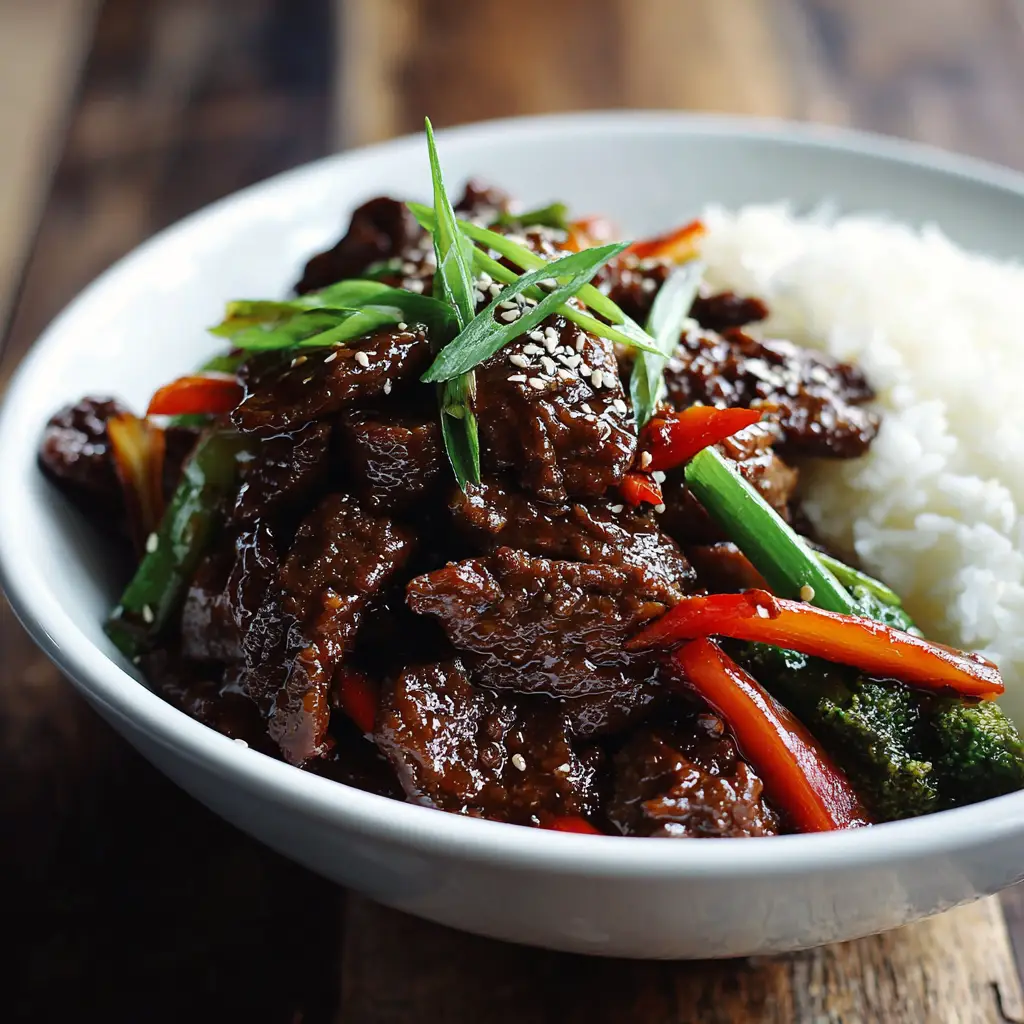
Tips for Customizing the Recipe
Mongolian beef is versatile and easy to adjust to personal preferences. For those who enjoy a bit of heat, adding chili flakes or a dash of Sriracha to the sauce enhances the flavor profile. Swapping beef sirloin for flank steak or ribeye is another option, though cooking times may vary slightly. Incorporating vegetables such as bell peppers, broccoli, or snow peas not only adds color but also increases the nutritional value of the dish. For a lighter version, reduce the amount of brown sugar or substitute with a natural sweetener like honey. Using low-sodium soy sauce can help manage sodium intake without sacrificing taste. Marinating the beef for 15 to 30 minutes before cooking allows the flavors to penetrate the meat, making it even more flavorful. Finally, experimenting with different garnishes like toasted sesame seeds or crushed peanuts can add a satisfying crunch and elevate the dish visually.
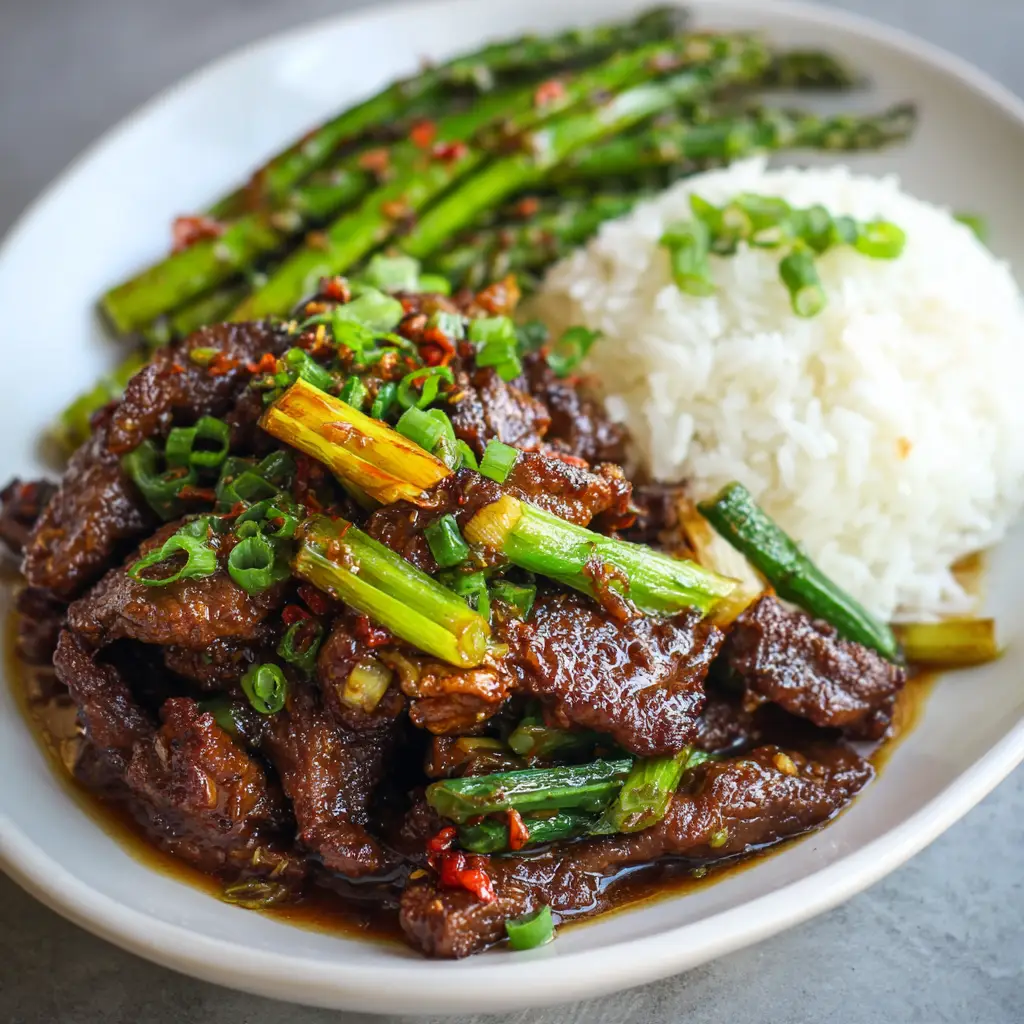
Nutritional Information
Mongolian beef provides a satisfying mix of protein, carbohydrates, and fats. The dish can be adapted to suit dietary needs by adjusting portions or ingredients. A typical serving of Mongolian beef with rice contains approximately:
Using lean beef and controlling the amount of oil and sugar can reduce calories while maintaining flavor. Incorporating vegetables increases fiber and adds vitamins and minerals. Serving the beef with brown rice instead of white rice provides more fiber and a slower release of energy. These adjustments make the dish both nutritious and satisfying.
Serving Suggestions
Mongolian beef pairs well with a variety of sides, making it adaptable for different meals. Steamed rice remains the classic choice, but it can also be served with noodles or quinoa for a modern twist. Adding a side of stir-fried vegetables such as bok choy, snap peas, or carrots enhances both nutrition and presentation. For a fresh contrast, a crisp cucumber salad or lightly pickled vegetables complements the rich flavors of the beef. Garnishing with chopped green onions, sesame seeds, or fresh cilantro adds both texture and visual appeal. Leftovers can be stored in the refrigerator for up to three days and reheated for a quick meal that retains most of its original flavor.
Mongolian Beef Recipe Easy Homemade Cooking Guide
Course: Blog4
servings15
minutes15
minutes500–600
kcalIngredients
1 pound beef sirloin, thinly sliced
1/2 cup soy sauce
1/2 cup brown sugar
3 cloves garlic, minced
1 tablespoon ginger, minced
1/4 cup cornstarch
2 tablespoons vegetable oil
3 green onions, sliced
Directions
- Prepare the Beef: Slice beef thinly and coat with cornstarch.
- Make the Sauce: In a bowl, mix soy sauce, brown sugar, garlic, ginger, and water. Stir until sugar dissolves.
- Cook the Beef: Heat oil in a skillet over medium-high heat. Cook beef in batches for 2–3 minutes per side until browned. Remove and set aside.
- Simmer Sauce: Pour sauce into the skillet, simmer for 2–3 minutes until slightly thickened.
Recipe Video
Notes
- Use thinly sliced beef for tender results.
Adjust sweetness or saltiness by changing sugar or soy sauce amounts.
For extra flavor, marinate beef 15–30 minutes before cooking.
Frequently Asked Questions
Can I use chicken instead of beef?
Yes, thinly sliced chicken breast or thigh works well. Cooking time may be shorter, so monitor carefully to avoid overcooking.
How can I make the sauce thicker?
Mixing additional cornstarch with water and adding it to the simmering sauce will thicken it quickly. Stir constantly to prevent lumps.
Is Mongolian beef gluten free?
Traditional soy sauce contains gluten, but using tamari or a gluten-free soy sauce alternative ensures the dish is gluten free.
Can I prepare this dish ahead of time?
The beef is best served fresh, but the sauce can be prepared in advance. Store beef and sauce separately and combine just before cooking.
What sides go well with Mongolian beef?
Steamed rice, noodles, stir-fried vegetables, or fresh salads are excellent options. Adding pickled vegetables creates a balance of flavors.
Conclusion
Mongolian beef is a versatile, flavorful, and satisfying dish that transforms a few simple ingredients into a restaurant-quality meal. The combination of tender beef, aromatic garlic and ginger, and a sweet and savory sauce creates an unforgettable taste experience. Homemade preparation allows for control over sweetness, saltiness, and heat while providing the opportunity to add vegetables or customize protein choices.



